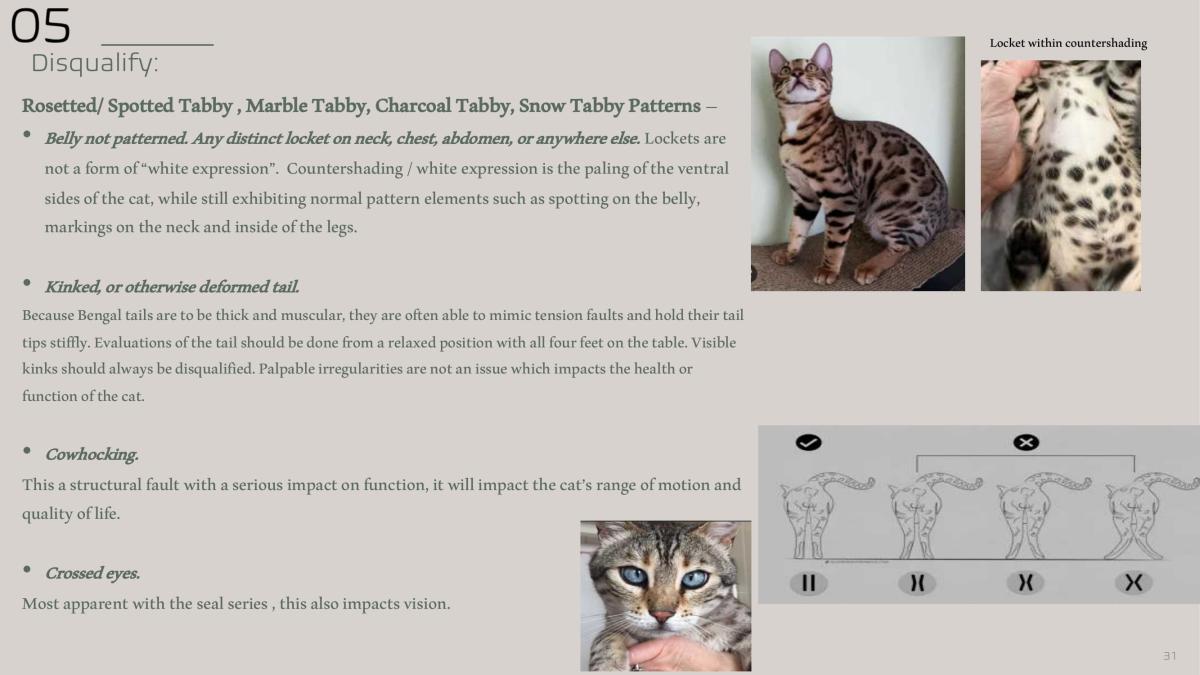Rosettes or spots running together vertically forming a mackerel tabby pattern.

Penalize
Rosetted/Spotted Tabby Pattern-
Rosettes or spots running together vertically forming a mackerel tabby pattern. Being rosetted does not make the vertical better, in fact, a greater percentage of the pattern is wasted by undesirable pattern flow.
• Marble Tabby Pattern- Circular bull’s eye pattern. Bengals should never resemble the classic tabby pattern of other breeds. The pattern should be elongated and broken, no roundness should be seen in the alignment, only horizontal or diagonal flow.
• Snow Tabby Pattern- Substantially darker point color as compared to color of body markings. Although the lynx coloration is temperature controlled, the goal of the Bengal breed is to have as much uniformity in the color of
the markings throughout points and body. The exact (all examples on this page show faults) Double, rosetted vertical bars Vertical rib bar Vertical rib bar
All marbles pictured are too circular. All lynx points are lacking in body contrast as compared to their points opposite from breeds such as the Siamese

Disqualify:
Rosetted/ Spotted Tabby , Marble Tabby, Charcoal Tabby, Snow Tabby Patterns –
• Belly not patterned. Any distinct locket on neck, chest, abdomen, or anywhere else. Lockets are
not a form of “white expression”. Countershading / white expression is the paling of the ventral sides of the cat, while still exhibiting normal pattern elements such as spotting on the belly, markings on the neck and inside of the legs.
• Kinked, or otherwise deformed tail.
Because Bengal tails are to be thick and muscular, they are often able to mimic tension faults and hold their tail tips stiffly. Evaluations of the tail should be done from a relaxed position with all four feet on the table. Visible kinks should always be disqualified. Palpable irregularities are not an issue which impacts the health or function of the cat.
• Cowhocking.
This a structural fault with a serious impact on function, it will impact the cat’s range of motion and quality of life.
• Crossed eyes.
Most apparent with the seal series , this also impacts vision.

Acknowledgements and Full Credits to: https://cfa-files.s3.us-east-2.amazonaws.com/breed-presentations/Bengal.pdf
